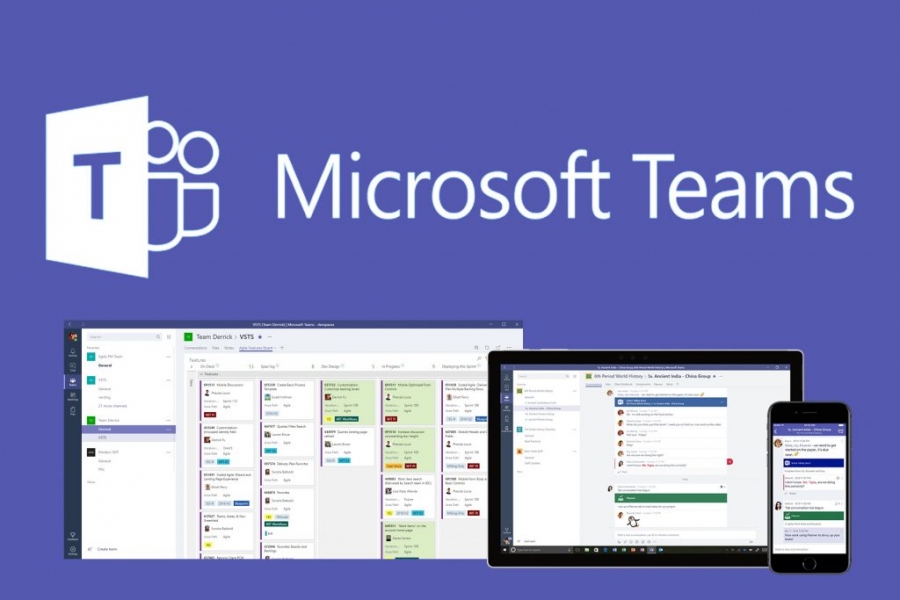Microsoft Teams is a communications platform that combines file storage in the cloud with a suite of different apps all in one place. Being part of the Office 365 family, Teams can be set up for free as part of a school-based licence, which in turn makes it accessible for pupils and staff to collaborate online.
A screenshot of the Teams app in use in the classroom.
Share files
One its the biggest benefits is the ability to share files and assignments from a central storage base. Instead of having resources in a variety of different places, Teams can pull it all together, assisting in keeping content streamlined and organised. This means that pupils can locate key information quickly, whether that be in school or at home.
Marking rubric
The assignments tab is particularly useful for when teachers issue a new task or project, as a marking rubric containing success criteria can be attached alongside points for completion and submission dates. Within the same class, different sets of pupils can be assigned different tasks which supports differentiation in the classroom. This can be achieved all through one tab which makes it easier to administer and manage.
Celebrate pupil achievements
The praise tab enables teachers to celebrate pupil achievements through digital badges and comments. This is an effective way of promoting inclusivity in the classroom by recognising individuals for their progress or effort. Pupils can keep track of which badges they have been awarded through the year and the reasons behind attaining each one. This is then shared on the class channel, helping to recognise individual successes among peers.
The praise tab allows teachers to celebrate individual pupil successes during lessons.
Learning can be transparent
Due to Teams being a digital hub for teachers and pupils, learning can be transparent for all. It engages pupils in new ways by giving teachers creativity to deliver content through text, video, voice, stickers and animated GIFs. This appeals to the 21st century learner as pupils can interact in a digitally social way, transforming the learning experience as dynamic, collaborative and fluid. With Teams, individual needs in a class can be addressed with the capacity to tailor content and resources to different groups. This allows progress to be maximised whilst encouraging productivity to get things done.
Learning journey
Teachers can have more control over the learning journey that is taking place when using Teams. Being able to modify, change and filter posts and messages, this reinforces the need for establishing a safe and productive classroom environment all of which is achieved through Teams. The quietest of voices can be heard when encouraging pupils to interact through this platform as the social networking type interface makes it a familiar and appealing layout for pupils.
Develop digital literacy skills
By using Teams, teachers can offer learning experiences that enable pupils to take ownership and develop digital literacy skills as they communicate and collaborate with peers. Differentiation and individual learning needs can be met when teachers develop assignments for either group or independent projects. This can be strengthened further when paired with other apps such as OneNote Classbook or Microsoft Forms. There are also opportunities for personalised learning as the platform can be set up to offer online intervention sessions which has the potential to support pupils who are finding concepts in class difficult to master. This subsequently prepares pupils for the future workplace in that they are using industry standard tools and practices to solve problems.
Flipped learning
Lastly, Teams encourages flipped learning in a seamless and rich way. By integrating video services such as YouTube or Stream, pupils can be set out of class learning experiences all from the click of a tab. In addition to this, OneNote can be implemented for collaborative note-taking to gain multiple perspectives on topics, or to assist pupils in order to catch up following an absence. Regardless of subject, Microsoft Teams could be a cost saving solution to creating an inclusive digital classroom.


















